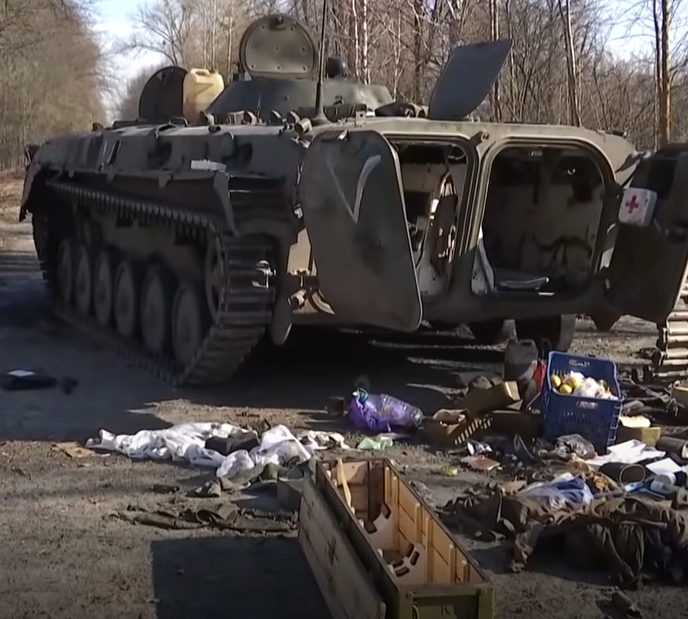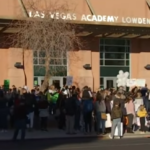Ukraine: A Modern War Exposes Russia’s Military Problems

“War is hell,” an American general once said. General William Tecumseh Sherman’s words from the U.S. Civil War resonate today more than ever as Russia’s invasion of Ukraine plays out on social media and television for the world to see. Video footage of bombed-out apartment buildings, burned out cars, dead civilians from all walks of life and ages have played out for the global audience.
On February 24, 2022, Russia’s military crossed the Ukrainian border and began its invasion, which caught the Ukraine, the U.S. and their European allies by surprise. Although the Biden administration warned for weeks that a Russian invasion was imminent, political leaders allegedly did not believe the intelligence reports that Russia would invade Ukraine and were solely saber-rattling and making a public spectacle.
Yet, Russia went forward with the invasion and it was met with global outcry and criticism. Russian soldiers surrounded major population centers in the capital city of Kyiv, and other large cities Kharkiv and Mariupol and bombed civilians as they tried to hide or escape from the war zone. Russia’s military has also launched missile strikes on the western city of Lviv and fired at a Ukrainian training facility near the Ukrainian-Polish border.
Russia unexpectedly ran into stiff Ukrainian resistance, suffered from multiple logistical failures, became lost or ambushed in unpredictable terrain, while Russia’s economy has been shocked by corporate boycotts and sanctions.
But, the question remains, why is Russia’s military failing to quash Ukrainian resistance despite a large technological and military advantage?
By the third day, Russian tanks and armored vehicles ran out of gas and were stuck on Ukrainian roads or mired in the muddy plains. It demonstrated that Russia’s planners in the military did not anticipate that their invasion would last longer than three days. There were several videos on social media of Ukrainian civilians towing stalled tanks or transport vehicles scattered across Ukraine, where the Ukrainians openly mocked the pitiful state of the Russian military.
In one such encounter, a Ukrainian civilian was filmed with Russian soldiers near a vehicle that was out of gas. The man offered, in Russian, to tow the soldiers’ vehicle back home to Russia. The soldiers declined the offer, much to the enjoyment of Ukrainians who spoke about the video online.
Another element that Russia’s military may not have accounted for is the lack of road and highway infrastructure in Ukraine. There are a handful of approaches to reach major cities like Kyiv. Tanks and transport vehicles have become stuck in muddy Ukrainian fields, in addition to running out of gas, both of which makes these vehicles sitting ducks for Ukrainian attacks.
Historically, the French emperor Napoleon ran into similar problems when he invaded Russia. The lack of major road networks impeded his advance, and his retreat, in addition to the devastating Russian winter weather.
It appears that Russia did not learn the lessons from Napoleon’s defeat and did not anticipate how the lack of road and highway infrastructure in Ukraine would create chokepoints and dangerous funnels for its soldiers. The situation is ripe for ambushes by Ukrainian soldiers because there are not enough safe avenues for a Russian retreat in case of an attack.
On his podcast, Texas Republican congressman Dan Crenshaw, a former U.S. Navy SEAL, noted that Russia’s military has not fought a conventional military force in decades. He said that it is far different than Russia’s military campaigns against Syrian rebels in the Middle East or Chechen militants in Central Asia. It is far different for military forces to engage well-equipped, adequately-trained conventional military forces than hit-and-run terrorist cells or rebel groups that aren’t as well-equipped or trained in tactics or strategy.
Adding to Crenshaw’s point, Ukrainians have been training since the 2014 Russian invasion of eastern Ukraine and Crimea and are more prepared for defensive warfare. They are familiar with using rocket-propelled grenades (RPG’s for short) and have received training on using anti-vehicle, anti-tank, and anti-aircraft weapons called NLAW. Some have been trained by U.S. military trainers to use Javelins and Stingers, which are primarily anti-aircraft rocket launchers.
The unfamiliarity that Russian soldiers have in Ukraine cannot be disregarded, too. Ukrainians, like any local in the U.S., know their towns and surrounding area well. Foreigners, such as the Russian military, do not know the layout of the land or town other than looking at maps and images provided to them by intelligence reports.
Several videos show Ukrainian soldiers ambushing tank columns down major roads or in the muddy plains in small towns using these anti-vehicle weapons. Other videos show the devastation that Ukrainian forces wreaked on Russia, with vehicles and tanks alike burning and Russian soldiers’ bodies strewn across roads and in fields.
The Russian government has not been transparent with its citizens either. Russian civilians have called a Ukrainian telephone hotline to try to find their loved ones in the Russian military, with the hope that they are still alive. The hotline either tells the callers that the person is either killed, captured, or status unknown. Russia’s Defense Ministry has stalled multiple complaints from citizens about where their conscripted sons are and whether they are alive.
This does not even address the relative success that the outnumbered Ukrainian air force has had against Russian air power. Everyone assumed that Russia would have shut down Ukraine’s airspace within days and far outnumbered the Ukrainian air force by the hundreds. Instead, a Ukrainian raid destroyed dozens of parked military helicopters and on multiple occasions, Ukrainian ground forces shot down Russian jet fighters. Considering that the Ukrainians are estimated to have about 50 aircraft, it is a major feat.
Another surprising aspect is that Russia’s military does not operate effectively at night. Much of their movement and attacks occur in the daytime, even though Russia has night-vision goggles for its soldiers. In the early days of the invasion, their night attacks bumbled into traps and ambushes by Ukrainians. Russian jets have also followed suit, out of fear of anti-aircraft fire in the night.
One British military expert, Michael Clarke, told Sky News that Russian pilots have about 100 hours of flight time in the cockpit per year, compared to North Atlantic Treaty Organization (NATO) pilots who log in about 200 hours. The discrepancy in flight hours may have given Ukrainian pilots, who train with NATO member nations, an edge even if Ukraine is not a formal member of NATO. Initial estimates put the Russian air force at 1,511 combat aircraft compared to Ukraine’s 98 aircraft, or a tenfold advantage favoring Russia. Clarke said, “Military analysts are still scratching their heads as to why the Russians haven’t made more of their natural air superiority.”
There is also the active participation of Ukrainian civilians, who have taken up arms to defend their homes and country. Long lines outside of police stations became commonplace, while civilians waited in line to receive weapons from the police and to enroll crash-course weapons training. An active resistance will pose problems for an occupying Russian military, which the U.S. military understands after its wars in Iraq and in Afghanistan.
The world respected, or feared, the supposed military might of Russia before its invasion of Ukraine. But, as Russia’s mistakes pile up, its aura of invincibility has gone down significantly.




